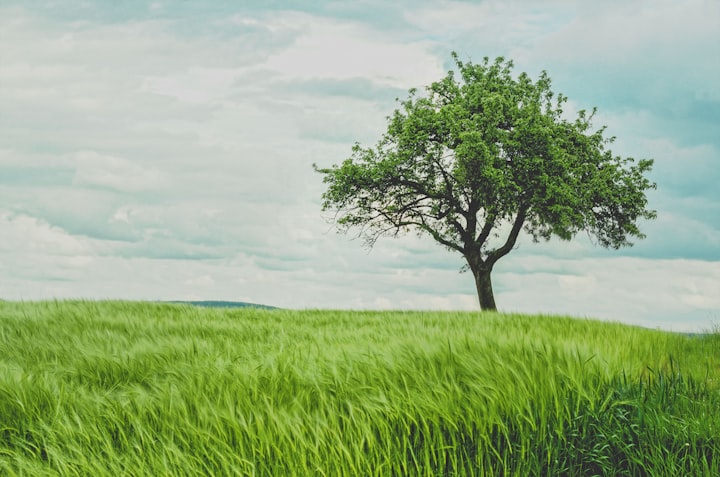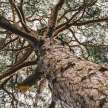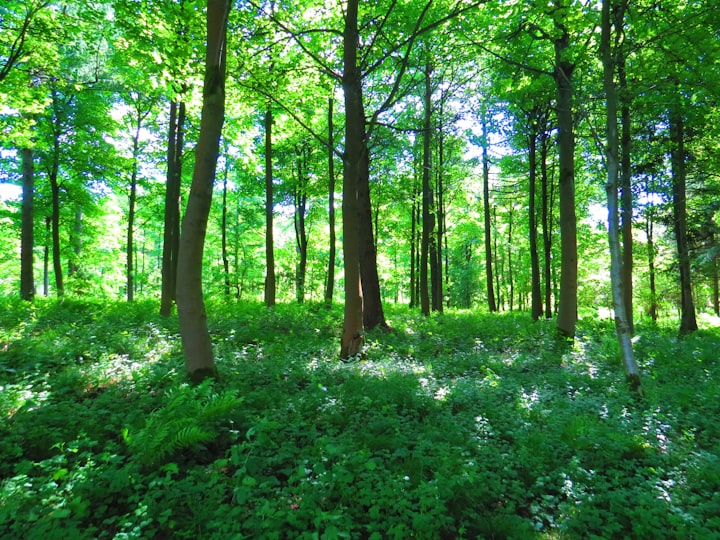
The dictionary defines it as a woody plant with a trunk from which branches grow. So the main shoot must be dominant and grow steadily upward or the plant is classified as a shrub, which has many smaller trunks—or rather branches—that originate from a common rootstock. But what about size? Personally, I’m always bothered when I see reports about Mediterranean forests that look to me like a collection of bushes. Trees are, after all, majestic beings, under whose crowns we seem as insignificant as ants in the grass. But then again, on a journey to Lapland, I stumbled upon completely different ambassadors of the tree family that made me feel like Gulliver in Lilliput. I’m talking about dwarf trees on the tundra, which are sometimes trampled to death by travelers who don’t even know they are there. It can take these trees a hundred years to grow just 8 inches tall. I have to say that science doesn’t recognize them as trees, and it doesn’t accord tree status to the Arctic shrubby birch, either (as you can tell by its name). The latter can grow little trunks up to 10 feet tall, but mostly they remain below eye level and, therefore, are clearly not taken seriously. But if you were to apply the same measure to other trees, then small beeches or mountain ash wouldn’t count as trees either. These two are often browsed on so heavily by large mammals such as deer that they grow multiple shoots like bushes and hold out at a height of 20 inches for decades.
And what if you cut a tree down? Is it then dead? What about the centuries-old stump I introduced you to at the beginning of this book that is still alive today, thanks to its comrades? Is that a tree? And, if it isn’t, then what is it? It gets even more complicated when a new trunk grows out of an old stump. In many woods, this happens all the time. For centuries in Europe, deciduous trees were cut right down to the base of their trunks by charcoal burners, who harvested them to make charcoal. New trunks grew from the base, forming the foundation for the deciduous woods we have today. Oak and hornbeam forests, in particular, originate from this kind of harvesting, which is known as coppicing. In these forests, the cycle of cutting back and allowing the trees to regrow was repeated every few decades, so the trees never grew tall or matured. Coppicing was popular because people were so poor in those days that they couldn’t afford to wait any longer for new wood. You can spot these relics of bygone times when you take a walk in a European forest. Look for trees that have numerous bushy trunks or thick callouses at the base where periodic felling has encouraged a proliferation of growth. Are these trunks now young trees, or alternatively, are they really thousands of years old?
This is a question also asked by scientists, among them a group researching ancient spruce in Dalarna province in Sweden. The oldest spruce in Dalarna has grown a carpet of flat shrubby growth around its single small trunk. All this growth belongs to one tree, and its roots were tested using carbon 14 dating. Carbon 14 is a radioactive carbon that continuously forms in the atmosphere and then gradually decays. This means that the ratio of carbon 14 to other carbon in the atmosphere is always the same. Once carbon 14 is incorporated into inactive biomasses, for instance wood, the process of decay continues unabated, but no new radioactive carbon is accumulated. The lower the amount of radioactive carbon it contains, the older the tissue must be.
Research revealed the spruce to be an absolutely unbelievable 9,550 years old. The individual shoots were younger, but these new growths from the past few centuries were not considered to be stand-alone trees but part of a larger whole.33 And, I think, quite rightly so. The root is certainly a more decisive factor than what is growing above ground. After all, it is the root that looks after the survival of an organism. It is the root that has withstood severe changes in climatic conditions. And it is the root that has regrown trunks time and time again. It is in the roots that centuries of experience are stored, and it is this experience that has allowed the tree’s survival to the present day. As a result of this research on the spruce, a number of scientific schools of thought have been thrown overboard. On the one hand, before this research, no one had any idea that spruce could live for much more than five hundred years; on the other, until then, people had assumed that this conifer first arrived in this part of Sweden two thousand years ago after the ice retreated. For me, this inconspicuous small plant is a symbol for how little we understand about forests and trees and how many wonders we have yet to discover.
So, let’s get back to why the roots are the most important part of a tree. Conceivably, this is where the tree equivalent of a brain is located. Brain? you ask. Isn’t that a bit farfetched? Possibly, but now we know that trees can learn. This means they must store experiences somewhere, and therefore, there must be some kind of a storage mechanism inside the organism. Just where it is, no one knows, but the roots are the part of the tree best suited to the task. The old spruce in Sweden also shows that what grows underground is the most permanent part of the tree—and where else would it store important information over a long period of time? Moreover, current research shows that a tree’s delicate root network is full of surprises.
It is now an accepted fact that the root network is in charge of all chemical activity in the tree. And there’s nothing earth shattering about that. Many of our internal processes are also regulated by chemical messengers. Roots absorb substances and bring them into the tree. In the other direction, they deliver the products of photosynthesis to the tree’s fungal partners and even route warning signals to neighboring trees. But a brain? For there to be something we would recognize for these, in addition to chemical messages, you need electrical impulses. And these are precisely what we can measure in the tree, and we’ve been able to do so since as back as the nineteenth century. For some years now, a heated controversy has flared up among scientists. Can plants think? Are they intelligent?
In conjunction with his colleagues, Frantisek from the Institute of Cellular and Molecular Botany at the University of Bonn is of the opinion that brain-like structures can be found at root tips. In addition to signaling pathways, there are also numerous systems and molecules similar to those found in animals.34 When a root feels its way forward in the ground, it is aware of stimuli. The researchers measured electrical signals that led to changes in behavior after they were processed in a “transition zone.” If the root encounters toxic substances, impenetrable stones, or saturated soil, it analyzes the situation and transmits the necessary adjustments to the growing tip. The root tip changes direction as a result of this communication and steers the growing root around the critical areas.
Right now, the majority of plant researchers are skeptical about whether such behavior points to a repository for intelligence, the faculty of memory, and emotions. Among other things, they get worked up about carrying over findings in similar situations with animals and, at the end of the day, about how this threatens to blur the boundary between plants and animals. And so what? What would be so awful about that? The distinction between plant and animal is, after all, arbitrary and depends on the way an organism feeds itself: the former photosynthesizes and the latter eats other living beings. Finally, the only other big difference is in the amount of time it takes to process information and translate it into action. Does that mean that beings that live life in the slow lane are automatically worth less than ones on the fast track? Sometimes I suspect we would pay more attention to trees and other vegetation if we could establish beyond a doubt just how similar they are in many ways to animals.
About the Creator
Rainbow Tree
Read our New Trees, Flowers and Fruits Article
Enjoyed the story? Support the Creator.
Subscribe for free to receive all their stories in your feed. You could also pledge your support or give them a one-off tip, letting them know you appreciate their work.






Comments
There are no comments for this story
Be the first to respond and start the conversation.